















































Welcome to Providence Point, Pittsburgh’s premier senior living Life Plan community. Located on 32 acres in the South Hills, our community offers various care levels to suit your needs.
• Independent Living: Enjoy 1- and 2-bedroom apartments or single-family patio homes, with events, classes, fitness center, spa, fine dining, and comprehensive wellness programs.
• Skilled Nursing & Rehabilitation: Private suites with full rehabilitation therapies for long-term care or short-term recovery.
• Personal Care: Private suites with meals, events, and personalized support.
• Memory Support Care: Secure, specialized care for individuals living with dementia, with a new Memory Support Care Center opening soon.
At Providence Point, embrace peace of mind and the chance to live life uplifted.




Are you tired of numberness, tingling, burning, balance issues, loss of sleep due to your peripheral neuropathy?
Barb M






Are you like most people with this diesease and have taken Gabapentin, Lyrica, Neurotin or other medications without results or improvements? Do your symptoms continue to get worse?
I am 100% better and looking forward to starting to go for walks again.
Wayne L I am back cutting the grass, walking through the neighborhood and doing more things.
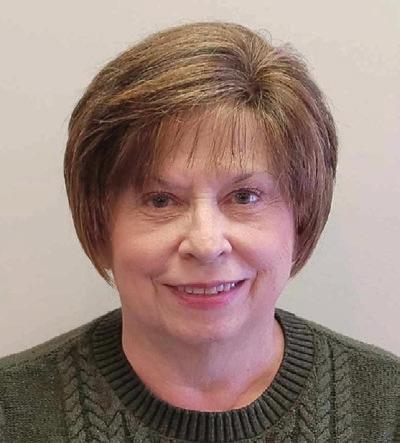
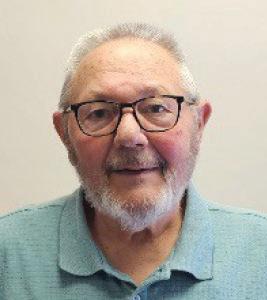
Take a qualifying survey to determine if you are a candidate www.MaryDancedIn.com



By Karen Mansfield
The center, citing Census Bureau projections, said the number of centenarians is expected to grow from an estimated 101,000 in 2024 to about 422,000 by 2054. According to the center, the number of centenarians in the country has steadily gone up since 1950, when there were an
estimated 2,300 Americans aged 100 or older.
Dr. Matthew Koperwas, a geriatrics specialist at Allegheny Health Network, said those statistics are not surprising, as medical advances are expanding that population every year.
“And, you have baby boomers that make up a large swath of the population who are
aging,” said Koperwas.
While illnesses and disabilities can be major barriers to joining the 100-plus club, having a purpose to continue on with life might be one of the most important factors in longevity, he said.
“A common thread we see (for living longer) is what you hear from your doctor: eat





right, exercise, stay active – and as examples, we have these Blue Zones in places like Okinawa, Italy, and California based on Mediterranean or plant-based diets and regular physical activity and lifestyle, but something people don’t talk about as much is avoiding social isolation,” said Koperwas. “It’s hard for older people to keep a sense of connection as they age, and having a sense of purpose helps them age better.”
Currently, adults aged 65 or older make up about 18% of the population, Pew said, and that share is projected to jump to 23% by 2054.
But loneliness is prevalent. In 2020, 25 to 30% of people 65 or older reported feeling lonely frequently, and nearly one-quarter of adults over 65 are considered socially isolated.
Additionally, chronic loneliness increases the risk of dementia by 50%, the risk of heart disease by 29%, and the risk of stroke by 52%.
Women account for 78% of today’s centenarians, according to Pew, and women are still projected to make up the vast majority of centenarians – 68% – by 2054. The percentage of men 100 or older is expected to increase from 22% today to 32% in 30 years.
Over three-quarters of centenarians in the U.S. are white.
Globally, there are about 722,000 centenarians, according to the United Nations population projections for 2024. The agency sees that number growing more than five-fold by 2054 to about 3.98 million.
Japan is the only country with more centenarians today, with an estimated 146,000. China, which has the third-most centenarians, is projected to take the top spot in the next 30 years.
Koperwas said that medicine continues to develop new medical solutions to help people live beyond the average lifespan, but what’s important is to make life – at any age – fulfilling.
“With advances in modern medicine, we find treatments for more obscure diseases, for different types of cancer and illnesses,” he said. “It’s an incredible accomplishment to turn 100. But it’s just a number, and you can have a full life and live to be 75 or 90 or 100. There’s a lot of life: You have to live it.”
Courtesy of The Herald Standard




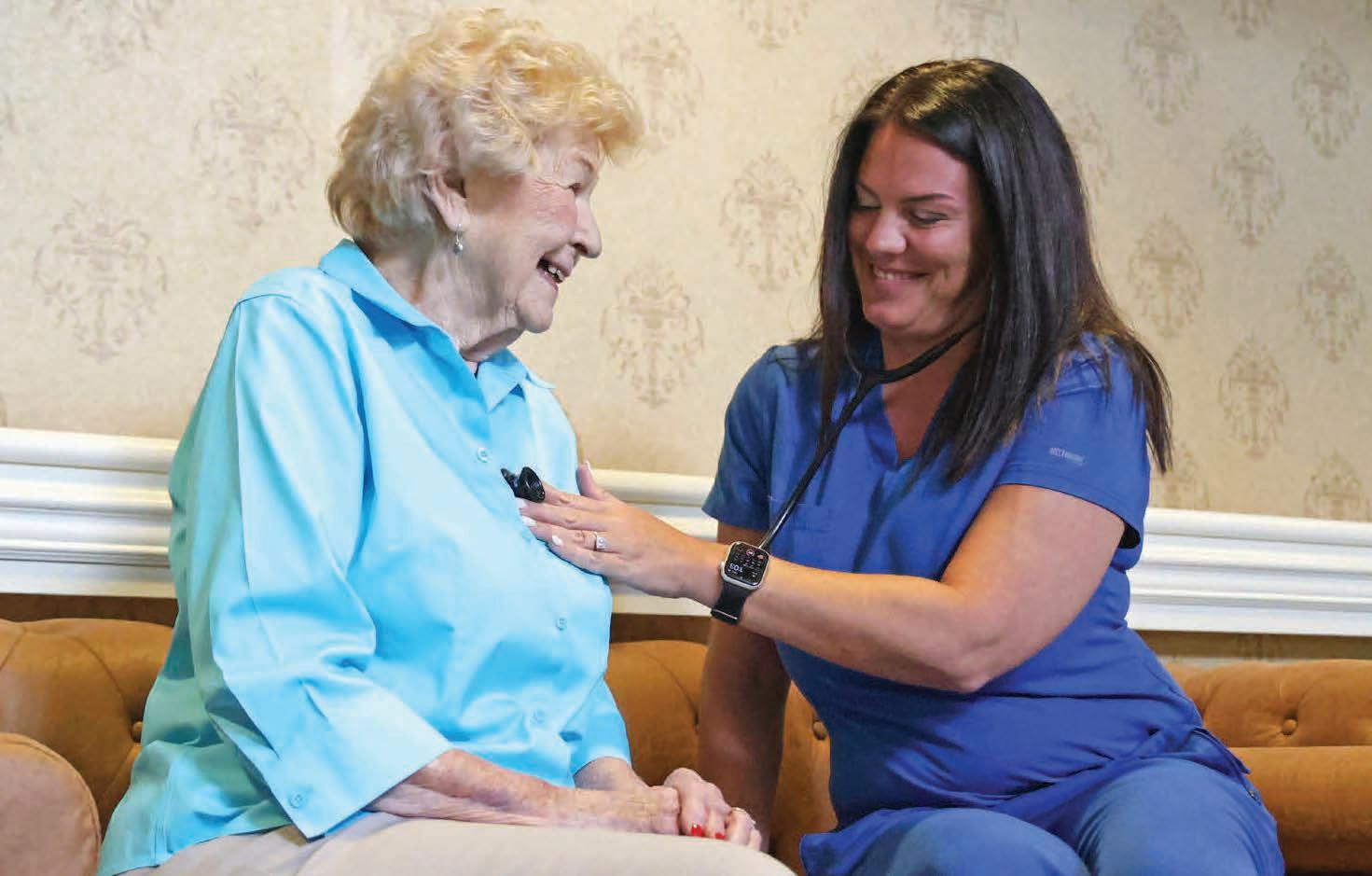



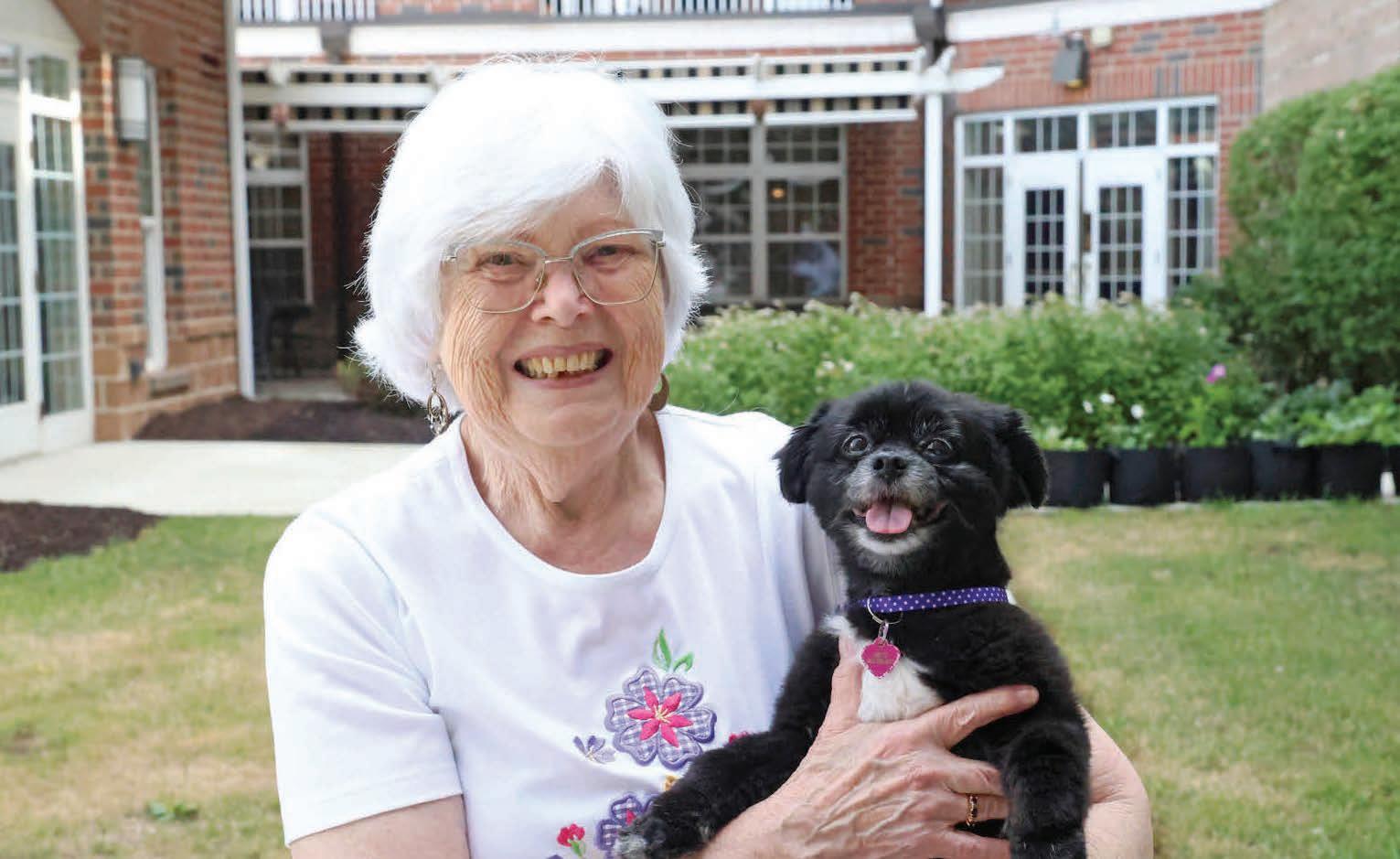
Caring. Comfort. Healing. It’s what you’ve come to expect from Concordia, whether in one of our residential communities or in your own home. We’re dedicated to offering high-quality care to the Pittsburgh South region now and in the future – with what we believe is the best in value in the area. Compare Concordia of the South Hills, Concordia of Bridgeville, Concordia Visiting Nurses and Concordia Hospice of Washington to other providers and see what makes our services the best of the best.










Learn more about our mission, locations, services and career opportunities at www.ConcordiaLM.org or connect with us on social media.


By Karen Mansfield
Townview Health & Rehabilitation Center’s activities room was filled on February 24 with the festive trappings of a birthday celebration: balloons, signs, and a cake. All befitting the woman of the hour.
Aggie DeJohn, a retired nurse whose career spanned more than 40 years – including 3 ½ decades as a beloved ICU nurse at Canonsburg Hospital – celebrated her 100th birthday surrounded by family, friends and staff members at Townview, the former Canonsburg General Hospital where she now resides.
AHN Canonsburg Hospital Director of Nursing Jamie Price and Chief Nursing Director Joy Peters presented DeJohn with a 35-year service pin and a giant card signed by hospital staff members.
“God bless them, they thought of everything,” said DeJohn, who wore a bejeweled tiara atop her snow white hair and ex-

Aggie DeJohn poses next to a chalkboard marking her 100th birthday.
changed hugs with staff and guests.
The day before, generations of Koliches and DeJohns gathered at a celebration at North Franklin Fire Hall to fete the centenarian.
“It’s a wonderful thing. For anybody that celebrates 100 years, it’s special. She has more energy than you and me put together. She’s still the kind and gentle soul she’s always been, and she still has her ornery side,” said Chris DeJohn, DeJohn’s youngest son, who attended both events.
Throughout her nursing career at Canonsburg Hospital, DeJohn worked the 11 p.m. to 7 a.m. shift, first at the old hospital on Barr Street, and then at the current AHN Canonsburg Hospital on Medical Boulevard, where she served as one of the first
nurses in the ICU when the hospital was built in 1983.
“I loved being a nurse. I tried my best to be kind to everybody and give them the help that I can. Being an ICU nurse, a night shift nurse, was interesting, and doctors and patients depended on you,” said DeJohn. DeJohn, one of six siblings, was born and raised in Strabane. She graduated from Chartiers-Houston High School’s first graduating class in 1942, and after hearing on the radio about a government program that would cover the cost of nursing school, she enrolled in Canonsburg Hospital’s nursing school.
She worked at West Penn Hospital for several years, and in 1958 took a nursing job in the ICU at Canonsburg Hospital, where








she remained until her retirement in 1993.
The career choice was a perfect one for DeJohn, whose compassion and cheerfulness endeared her to patients and co-workers.
“Aggie was an excellent nurse. I learned so much from her over the years,” said Dawn Grim, who is a nurse in the PACU at AHN Canonsburg and worked with DeJohn in the ICU, where DeJohn had served as her preceptor. “You won’t meet a kinder person. She was very dedicated to nursing, and the patient always came first for Aggie. She cared about her patients. Her assessment skills were phenomenal, and she gave me a lot of pointers that helped me throughout my career. She was always willing to jump in and help anyone. I was blessed to have her as a mentor and to work with her. She was a person you just wanted to know and be around.”
DeJohn’s nighttime work schedule prevented her from getting much sleep.
After finishing her shift, DeJohn would get her three sons off to school and her late husband, Mario, off to work before going to sleep from 9 a.m. until noon. Then, she’d do house chores until the boys came home, and go to bed around 9 p.m., catching an hour or so of sleep until she had to head into the hospital.
Chris, a paramedic for Ambulance and Chair EMS, said his mother, a devout Catholic, “was always a caregiver.”
“Both my mom and my dad’s attitude was to take care of everybody. Anyone who needed help, my mom would be there in a heartbeat. If someone needed a hand, or someone to talk to, even her nieces and
nephews, they’d call her,” he said.
As a nurse, Chris said, DeJohn had those same qualities.
“Mom made sure people were physically and mentally well. She was always willing to listen and always there for a patient if they needed someone to talk to,” he said.
Her nurturing also extended into the kitchen, where DeJohn “cooked up a storm,” said Chris.
“When I worked (in Canonsburg), my crew members would fight over who’d come with me when I stopped by Mom’s house because she had to feed everybody. She was a very good cook and she loved to cook and host people,” said Chris. “If you walked out of our house hungry, it was your fault.”
DeJohn also loved to bake, and said her favorite item to make was pizzelles, and she’d bake them by the hundreds for weddings, parties, and Christmas.
DeJohn was born in 1925, when Calvin Coolidge was president, the Pittsburgh Pirates won their second World Series, a new car cost $250, and a dozen eggs was 47 cents.
While raising her family with her husband, Mario, to whom she was married for 56 years before he passed away in 2006, she has seen first-hand the advances in technology, medication, and patient care.
And DeJohn is still a nurse at heart.
“If I wasn’t so old, I’d still do it,” she said, smiling. “I’ll be out there and I see a patient and I think, ‘Oh, if I could just help them a little bit.”
DeJohn doesn’t know if there is a secret to
reaching the 100 milestone – and, more importantly, leading a life well-lived.
“You live well, you eat well, you sleep well, you behave. Work every day, do the best you can, keep yourself in order and neat,” she said. “It’s been a nice life. You need seriousness along with fun, and you just have to cope with things.”
Another key, she said, is to “keep moving.”
She still walks one mile a day, briskly navigating the second-floor hallways aided by a walker.
And what is most important to her?
“I believe just being with family, and knowing my family is well and doing what I can to keep the family together,” she said. “That’s what matters.”
Courtesy of The Observer-Reporter
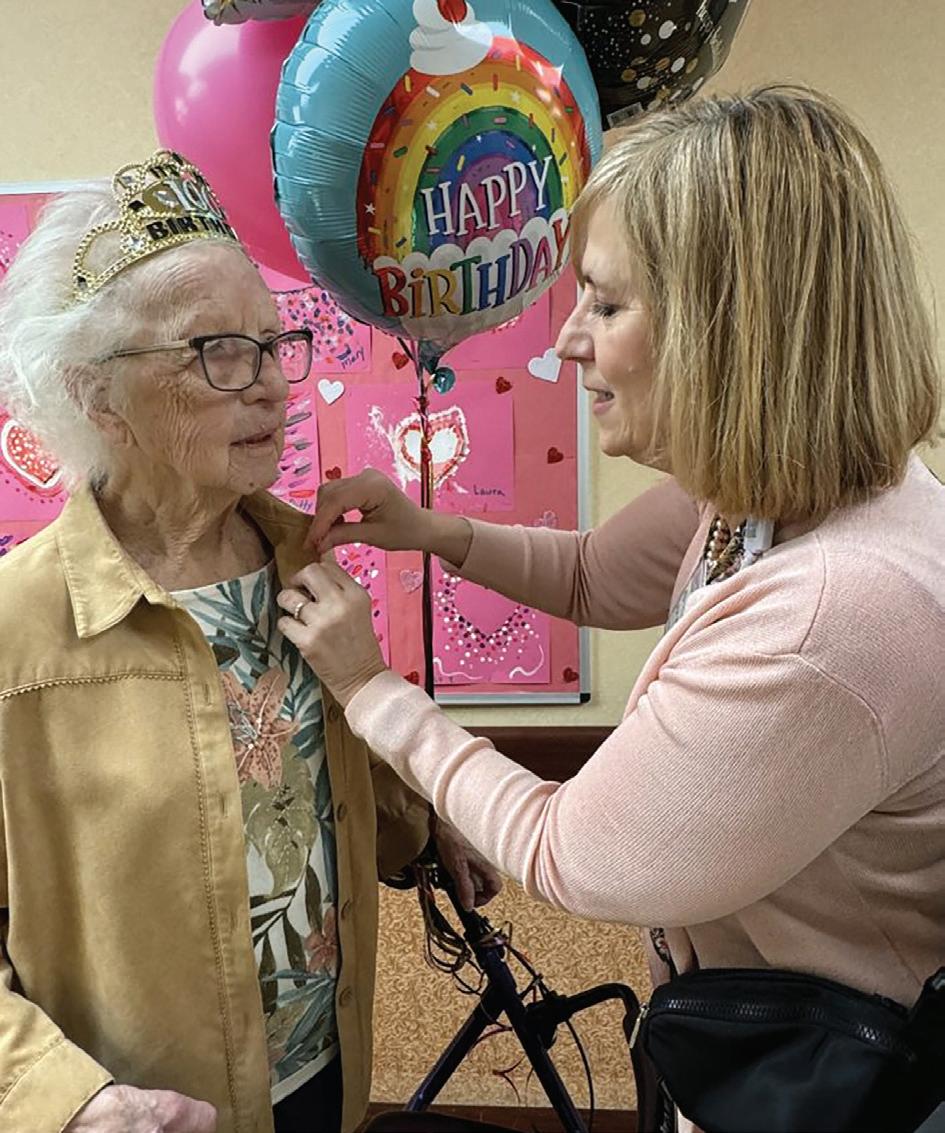
Joy Peters, Chief Nursing Director at AHN Canonsburg Hospital, places a pin commemorating Aggie DeJohn’s 35 years of nursing at Canonsburg Hospital
By Brad Hundt
The longtime executive director and CEO of the Pennsylvania Trolley Museum will be retiring May 31, it was announced in February. Scott Becker will be stepping down after 32 years at the museum in Chartiers Township. He will be succeeded by Jeanine L. DeBor, the museum’s deputy executive director.
In a news release, Becker said he would continue to be a volunteer at the museum after he retires, and the community support the museum has received “has been amazing and has allowed the museum to grow dra-
matically. It has really been an honor to be executive director of this wonderful organization…”
Becker has been with railway museums since 1972. Before arriving at the Pennsylvania Trolley Museum, he worked at the Shore Line Trolley Museum in East Haven, Conn., the Railroad Museum of New England in Thomaston, Conn., the Connecticut Trolley Museum in East Windsor, Conn., and the Eli Whitney Museum in Hamden, Conn. He was president of the Association of Railway Museums for 10 years, and was vice president of the Heritage Trail Alliance. He is the chairman of the Washington County Heritage Alliance.
Michael Kendlick, the Pennsylvania Trolley Museum’s president, said Becker’s leadership “has been the driving force behind all the museum’s success. His outreach as an

ambassador for the museum leaves a legacy that will ensure the story of the trolley era will be told to generations to come.”
Becker will be honored at the museum’s “Streetcar Soiree” on May 16. Information is available at pa-trolley.org.
Courtesy of The Observer-Reporter











































Cost-of-living has garnered significant attention in recent years and was one of the key issues surrounding the 2024 presidential election in the United States. That extra attention is warranted, as a recent Bankrate analysis of data from the U.S. Bureau of Labor Statistics found that consumer prices were 23 percent more expensive in February 2025 than they were in the same month in 2020.
Rising consumer prices have been a cause for concern among people from all walks of life, but retirees might be among the most vulnerable to such increases. Lacking a desire to return to the workforce or opportunities lucrative enough to make such a transition worthwhile, retirees may be looking for ways to stretch their retirement savings. The following three strategies may help seniors do just that.
1. Seek the help of a financial planner. Some seniors may see working with a financial planner as another expense at a time
when they’re trying to cut costs, but such professionals can provide a notable return on investment. Financial planners can help seniors currently navigating complex financial waters without a compass direct their resources toward low-risk vehicles that can grow wealth with the goal of ensuring a rising cost-of-living does not drain existing savings and leave seniors destitute. Even incremental growth can help combat inflation, and financial planners can identify options that promote growth while limiting risk.
2. Take up gardening. People from all walks of life have lamented rising grocery bills in recent years, but seniors are not helpless against rising food prices. The Economic Research Service at the U.S. Department of Agriculture estimates food prices will increase by 2.2 percent in 2025. Retirees are uniquely positioned to combat those increases, as many have the time and space to grow their own foods at a fraction of the cost of buying the same items at the store. Though gardening requires an investment of time (to learn the trade) and money (tools and a landscape adjustment, if necessary), it’s possible to recoup such initial costs rather quickly. A 2021 report on the website Greenhouse Today estimated
that a single tomato plant, which in 2025 typically can be purchased for less than $10, can yield 20 to 30 lbs. of tomatoes, producing somewhere between 20 and 90 tomatoes (size of the tomatoes will affect total yield). Grocery shoppers know that one pound of store-bought tomatoes is likely to cost around $5, give or take a dollar or two. In this example, seniors can save a substantial amount of money by growing their own food at home. Seniors can even join gardening groups where each member grows a particular food and then yields are shared among the group, leading to even more savings over time.
3. Request generic medications. The cost of medication is not fixed and is often vulnerable to changes in governmental policies. However, it’s fair to note that many seniors spend thousands of dollars per year on medication. Seniors can request generic alternatives to brand-name medications. The health care experts at Humana estimate generic drugs cost 80 to 85 percent less on average than brand-name drugs. That’s a considerable cost savings, and that advantage could prove even more significant if policy changes increase out-of-pocket medical costs for seniors in the coming years.
These three strategies can help seniors manage their money and protect their retirement savings in an era marked by a rising cost-of-living and an unpredictable economy






























































































































































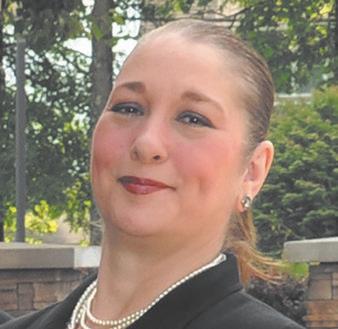


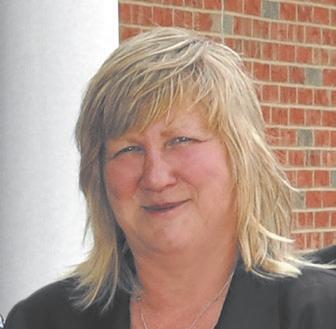
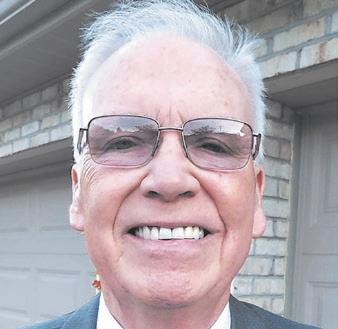





After a cold winter, there’s often nothing better than the arrival of spring. From the moment those first crocuses and tulips peek their heads out of the soil to the days of cherry blossoms in full bloom, spring is a time of sunshine, warmth and a renewed sense of vitality.
Seniors who may have spent much of the winter cooped up indoors often are inspired by warmer temperatures to venture outside once again when spring has sprung. According to UC Davis Health, time outdoors provides a host of health benefits, and seniors who embrace the great outdoors can reap those rewards. Studies show that nature has a positive effect on the body by reducing cortisol levels and demands on the cardiovascular system and relieving muscle tension. Being outside in sunshine (with the use of sunscreen) can increase vitamin D levels, which is important for a healthy immune system and strong bones.
Embracing the many ways to enjoy spring is relatively easy to do. The following are some ways seniors can make the most of spring.
Plant a garden. Spring is a time when the ground has thawed and the soil is warm enough to begin planting a garden. Individuals should refer to their particular agricultural zones to determine when to plant. Certain plants need a specific number of hours of sunlight and minimum temperatures to grow. It’s important to wait until the threat of overnight frost has subsided.

Gardening can be a thorough workout, so it’s important for seniors to go slowly as they acclimate to this type of activity. Relax outside. Seniors can soak up vitamin D and enjoy the sounds of nature by spending time on a deck or the front porch. Any activity that was typically done indoors, such as reading a book, listening to music, engaging in a hobby, and more, can be moved outside.
Explore local wildlife. Trees and flowers are not the only things renewed by spring. Many animals give birth in spring and there might be little ones frolicking. Seniors can look for bunnies, fledglings chirping in bird nests, spotted fawns, and young foxes around their neighborhoods.
Attend an open-air event. Whether it’s a concert or an outdoor theater performance, seniors can look to local entertainment as a way to get outside and have a little fun.
Bike or walk the neighborhood. Seniors can find serene paths to bike or walk. Dog owners can take their pooches for a stroll, or meet up with other friends and begin a walking club for camaraderie and exercise. Seniors can make the most of the warm weather and extended daylight hours of spring to enjoy many outdoor activities. Courtesy of Metro Creative






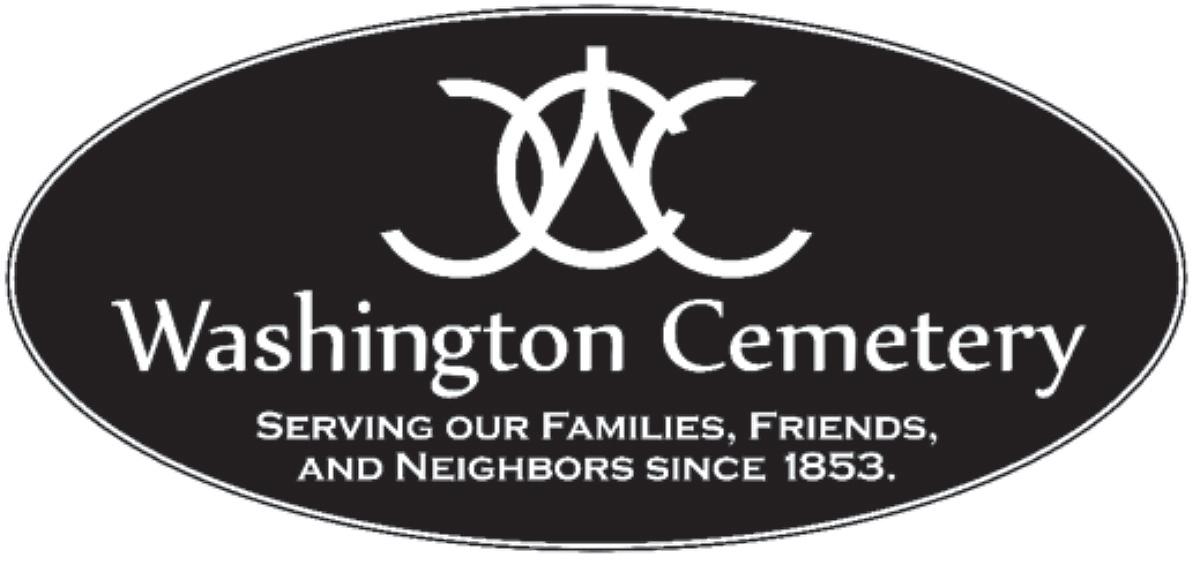
By John Andreassi
For 118 years Russell Brothers Building Supply has operated in Washington, but it will come to an end as the owner enters retirement.
David Russell was the third generation to run the West Wylie Avenue business, taking over after his father and grandfather before him.
Charles Russell, David Russell’s grandfather, opened the shop with his brother Norman Russell in March 1907.
“My grandfather and his brother were the original brothers. They both had jobs, and they quit their jobs to buy this little place here. They expanded over the years from going from selling feed and coal to building supplies. My dad went to college, and when got out of college and the Navy, he started here in, I believe, 1938,” Russell, 78, of South Strabane said.
Earle Russell, his father, ran Russell Brothers until his death in 1989.
Though Russell began working alongside his dad in 1983, taking over the family business was not always in the cards for him.
“I worked for a bank and a computer company for 12, 13 years before I came here. I always worked here in the summers and things like that,” Russell said.
At the time he started, Russell had been laid off, and his dad had to rebuild after a fire destroyed the original building. Since 1994,

David Russell has worked alongside his son Jason.
Russell Brothers sells all manner of masonry materials and tools. In recent years, that hasn’t been their main selling product, however,
“It’s changed in the respect that we’ve sold a lot more aggregates, like for driveways, rather than more of the building supplies. About 10 years it kind of started changing where we sold less building materials and more aggregates,” Russell said.
He added that business slumped during the pandemic and never fully recovered.
“It has kind of been a downhill slide since
COVID hit. I blame part of it on that,” Russell said.
Most of the business comes from what Russell described as “do-it-yourselfers” and home contractors.
“We sell a lot of concrete blocks for foundations and things like that … Not too much of the large-scale stuff,” Russell said.
According to Russell, he has sold the property to Insana Towing, which is located on Ohio Street in Washington.
Pam Russell, David’s wife, has mixed emotions as her husband prepares for retirement.
“It’s happy and sad, really, but it’s time,” Pam said. “I’d like him to enjoy a few years before


we get too old and decrepit to do anything.”
David said he often reflects on the history of the business, and the time his father and grandfather devoted to it.
“It was their whole lives, and it was my whole life too,” Russell said, adding that he is grateful to those who helped keep it running for more than a century. “I’m just thankful for all of our customers, our former and present employees. It has been great. That’s where my friends are derived from now, our customer list. I’m going to miss the contact with them for sure.”
Courtesy of The Observer-Reporter
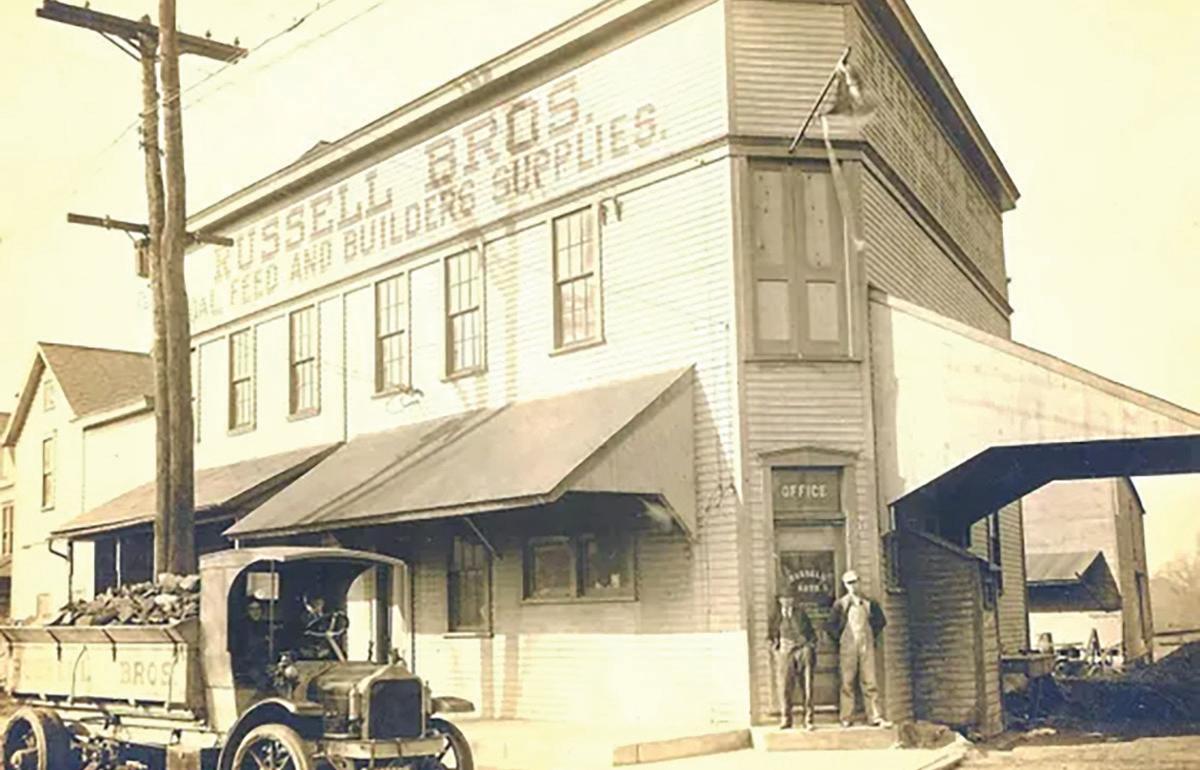





















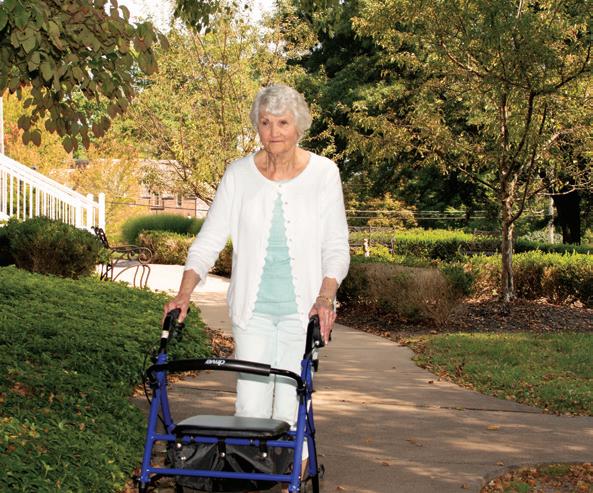
















Joan never planned on living in a personal care home. She was happy living at home in suburban Pittsburgh. Well into her eighties, she hosted family gatherings with homemade desserts, drove herself regularly, and was active in her local Catholic church.
However, an unexpected accident changed everything. Suddenly, Joan was no longer able to go back home and take care of her lawn and owers, or feed the birds, like she used to do.
















Her four daughters arranged for a tour of a personal care community at Presbyterian SeniorCare Network® , choosing it because of exemplary care their father received years ago at a skilled nursing community on the same campus.
Joan’s favorite activities include dice games, sing-a-longs, card games, and cookouts on the patio. She enjoys visiting the resident store to buy household items. To keep her mind sharp, Joan and several of her friends challenge themselves by playing “Word Wipe,” a word-making game, on a large screen in the activity room, excitedly calling out clues and answers.











That was two years ago. Now, Joan can’t imagine living anywhere else.





“I didn’t initially want to move out of the home I loved so much, but after a while, I really started to like it,” Joan said. “There’s lots to do and I’ve made many friends. My daughters know I’m safe. The place is beautiful, the staff’s wonderful, and the residents are great.”
She attends exercise class six days a week and walks as often as she can along the landscaped yard. “I’m 91 years old,” Joan said. “We all need to exercise. I appreciate that so much. My daughters are very supportive of me walking, so they bought me a Rollator. I love that Rollator.”
And she remains active spiritually. She attends weekly bible study and nondenominational service on Sunday, arriving early to distribute bulletins. After service, she assists a Chaplain with the preparations for afternoon tea. “Once a month, we have Catholic mass here, and I appreciate that so much,” she said.
To

























By Paul Paterra
Ralph Conklin has seen and done plenty in his 100 years.
The Sycamore man, who celebrated the milestone birthday on March 18, served in World War II, was married for more than seven decades, and owned a successful oil and gas business.
“I just thank the good Lord for letting me live that long and for the good health that he helped me to have,” Conklin said in a recent interview. “I’ve had a few knocks here and there, but that’s common.”
Conklin enlisted in the U.S. Navy shortly after graduating from the former Center Township High School in 1944, serving in World War II. He was a gunner’s mate third class on the USS Kenneth M. Willett, a destroyer whose primary purpose was to escort and protect ships in convoy.
“We escorted the first troops into Tokyo,” Conklin recalled. “I wouldn’t want to do it again. The worst part about the whole thing is that I was in a hurricane over there and that scared me worse than the Japanese flying over.”
Religion remains an integral role in Conklin’s

life and played a big part in raising his three sons, Randy, Doug and Kevin.
“He’s a Christian man,” said Doug, Ralph’s middle son. “He raised all of us in the church and instilled all of those values in us.”
Conklin is a member of Hundred (W.Va.)
Church of Christ. A church representative visits his home every Sunday to pray with him, share communion and a sermon and sing songs. Taped services are sent to him that he listens to daily.
“His church life is very important to him,” Doug added.
A lifelong Greene County resident, he noted that he was raised down the road from his current home. After he returned from the service, he married his wife, Jeannette, and the two lived in New Freeport until 2019, when Doug purchased a home adjacent to his own in Sycamore on Hopewell Ridge Road.
“We moved him up here on the hill beside
us, just so we could take care of him and Mom,” Doug said.
Ralph and Jeannette, who died in 2022 at the age of 96, were married for 74 years.
Last year, Ralph had some medical challenges, and had a pacemaker surgically implanted. He spent about six weeks at a nursing facility and is doing well.
Doug Conklin described his father as always being self-employed. He was a school bus contractor for the West Greene School District before he purchased Greenridge Oil Co.
“At one time I had 250 oil and gas wells,” Conklin said. “They were in West Virginia and Pennsylvania. I even had some way beyond Clarksburg (West Virginia).”
Conklin is president and remains involved.
“I just talk with them about things, but I don’t go out and do anything anymore,” he said. “They won’t let me,” he added with a chuckle.
The day-to-day operations of Greenridge Oil Co. are handled by Randy and Doug. All three sons are officers of the company.
Along with his three sons, Conklin has four grandchildren and four great-grandchildren with another expected in May.
Rebecca Phillips, who serves as Conklin’s caretaker, said he is like a grandfather to her.
“He’s been such a blessing to me,” Phillips said. “I always wanted a grandfather, because I never had a grandpap. We get along so well.”
Phillips said Conklin thoroughly enjoys receiving mail and if anyone would like to send him a birthday card may do so at 947 Hopewell Ridge Road, Sycamore, Pa., 15364.
A celebratory lunch was held March 22 to honor Ralph at the Waynesburg VFW.
Ralph credits his longevity to his faith.
“I couldn’t tell you (why I’ve lasted this long),” he said. “Only the good Lord can tell you that. I have always loved my Lord and with his guidance, that’s gotten me through some of the things I’ve gone through.”
Courtesy of The Herald-Standard


By John Andreassi
The Historic Church of St. Peter Parish in Brownsville – the oldest operating Catholic parish in Western Pennsylvania – celebrated its 180th anniversary with a special Mass that organizers hope will help return people to the church.
The first Catholic Parish in Fayette County planned a number of events that culminated with a Mass at 11 a.m. April 6 at the parish at 118 Church St. It was celebrated by the Rev. Efren Ambre, the church’s pastor, and Monsignor Raymod E. Riffle, vicar general of the Diocese of Greensburg. Some of the parish’s former priests were expected to be involved as well.
Larry Franks III, a lifelong parishioner, said ini-
tial plans were to celebrate the parish’s 175th anniversary in 2020, but the COVID-19 pandemic halted the plans. He and Ambre are hoping to use the weekend celebration as a homecoming for former pastors and families.
“We didn’t want to wait another 20 years to celebrate,” Franks said. “The fact that the anniversary falls on a Sunday we thought was something special, so we want to use it to bring people back to the church. For different reasons, our numbers have been down since COVID. We’re trying to bring in anybody who’s ever been to the church, whether they’re a member or not. It’s a really special place, and we just want to get as many people as we can to this Mass.”
The Historic Church of St. Peter Parish was named to the National Register of Historic Places in 1980. It is believed to have been the spot for the first religious service of any kind west of the Allegheny Mountains.
Only July 1, 1754, French troops, on their
way to capture Fort Necessity from the British, climbed the bank from the Monongahela River with their chaplain, the Rev. Denys Baron, and prayed for victory. The Mass of the French troops is depicted in one of the church’s stained-glass windows.
The windows, which feature 32 different shades of blue, depict Catholic history from 1754 to 1843.
The church was established in 1843 to serve the growing Irish American population. At the time, Brownsville was an important gateway to the West and South due to its location on the National Road, and the belief that it, not Pittsburgh, would be the seat of the Episcopal See, the area of the bishop’s ecclesiastical jurisdiction.
“People didn’t think Pittsburgh would amount to anything since it was so close to Brownsville,” said Franks, who also serves as church historian. “It was built to be the center of the diocese.”
That didn’t take place, but evidence of such plans exists, especially in the construction of the church. The pulpit is on the right when typically, the pulpit in a Catholic church is on the left. Usually, only the bishop may speak on the right of the church.
The current building is actually the third church on the site after the first two were lost to fire. This building has remained on the site since 1845.
The celebratory weekend began with the Lenten Fish Fry on April 4 at the new parish social hall. Franks said there was a table featuring photos and church relics as well as information on its storied history.
Franks also offered tours of the church after the 4 p.m. Mass on April 5. “I really enjoy showing off the church, taking people up to the choir loft and the gothic spiral staircase that no one ever goes up because it’s so treacherous,” he said. “Once you do get up there you see how really special the church is.”
Bishop Larry J. Kulick will not be in attendance, as he will be in Rome for the Diocesan Jubilee Year Pilgrimage but offered prayers to the parish for the upcoming anniversary celebration.
“This is a very special anniversary for the
Historic Church of Saint Peter Parish,” said the bishop. “This anniversary not only calls on us to remember the history and the past of this magnificent parish, but marking this anniversary, in a special way, allows us to look toward the future of the parish with renewed hope, especially in this Jubilee Year of Hope.”
Franks, who is in charge of the celebration, is a third-generation member of the church.
“Both my dad and my grandfather were ushers and council members like I am now,” Franks said. “I try to do anything that I can do there. It’s something I’m very passionate about.”
The parish currently has about 520 families in its congregation. He wants to invite people to return to the church and views the celebration as a way to make that happen.

“We want to use this celebration and Mass as a way to gather our flock to come home,” he said.
Courtesy of The Herald-Standard

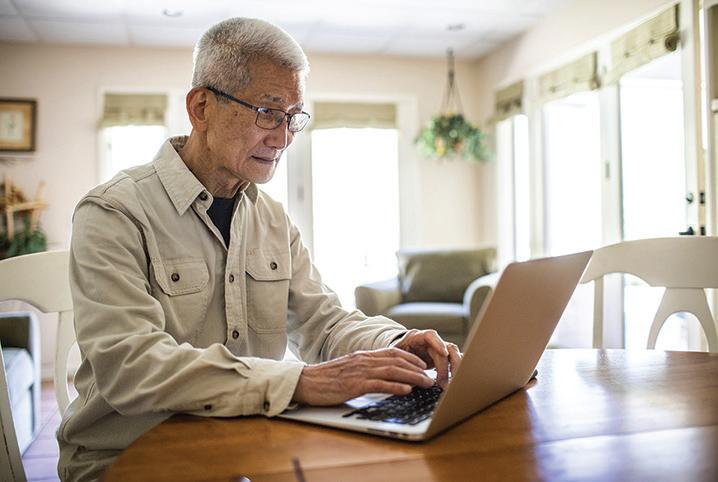
Financial scams are as old as the concept of currency. But consumers’ vulnerability to scams has seemingly increased in the twenty-first century, when the Internet and devices like smartphones have enabled scammers to gain access to potential victims’ financial information and even gain virtual entry into their homes.
Seniors are targeted by financial scammers with such frequency that the term ‘elder fraud’ has entered the English lexicon and is now widely recognized as a notable threat to individuals age 60 and older. In recognition of that threat, the Elder Justice Initiative aims to support and coordinate U.S. Department of Justice efforts to combat financial fraud that targets older adults. Those efforts are ongoing and include a number of initiatives to educate older adults about elder fraud, including warning seniors about some notable scams that criminals use to target older adults.
Social Security Administration Impostor Scam: When perpetrating this scam, criminals typically contact prospective
victims via telephone and falsely claim that suspicious activity has prompted the suspension of their Social Security number. Scammers may also indicate money must be withdrawn from a potential victim’s bank and stored on gift cards for security’s sake. It’s important to note caller ID spoofing is often utilized when perpetrating this scam so an incoming call appears to be coming from the Social Security Administration.
Tech Support Scam: This scam involves criminals claiming to be representatives from widely recognized companies who are calling to inform seniors that viruses or malware have been detected on their devices. Some also may claim a target’s computer has been hacked. The Federal Trade Commission notes perpetrators of this scam pretend to be tech support and request victims enable them to remotely access their devices or computer. Granting such access provides an avenue to view sensitive information, but scammers also may diagnose nonexistent problems and charge a fee. But the scam does not always stop there. Some call back later and
offer a refund to account for services that can no longer be rendered or to correct an overcharge. The scammers then request victims’ specific banking details under the guise of ‘correcting’ these alleged oversights.
Lottery Scam: The lottery scam involves scammers calling potential victims and informing them they have won a foreign lottery or sweepstakes. Perpetrators of this scam typically identify themselves as lawyers, customs officials or lottery representatives. The telemarketers behind this scam may be based in Jamaica, but the U.S. Embassy in Jamaica warns that those behind the scam will ask winners to pay various fees, including shipping and customs duties, until victims’ funds are exhausted.
Romance Scam: The FTC warns that wildly popular dating sites, social networking platforms and chat rooms provide opportunities for scammers to identify and exploit potential victims. The aim of these scams, which many victims are too ashamed to report even after they realize they’ve been victimized, is to convince targets to send money in the name of love. But the EJI warns that online love interests who ask for money are almost certainly scam artists.
These are just a handful of the many ways that modern scammers target seniors. More information about these and other scams is available at justice.gov/elderjustice.
Courtesy of Metro Creative

Health should be a priority, but too often life gets in the way and individuals take a reactive, rather than proactive, approach to their personal well-being. But living healthier need not be so difficult. In fact, research suggests that small, positive changes in how a person lives each day creates a healthier person over time.
A Hologic-Gallup survey on the state of women’s health conducted in April 2024 found 63 percent of respondents said it was hard for them to make health a priority. They cited feeling overwhelmed, needing to care for others before themselves, emotional/mental health, and work as the top barriers to focusing on health. But it’s important that both women and men recognize that small changes can add up to big results. These healthy habits can help individuals start living healthier lifestyles.
Get some exercise. Regular physical activity is one of the most important things a person can do fo his or her health. Exercise helps manage weight, reduces the risk of disease, strengthens bones and muscles, and improves brain health. The Centers for Disease Control and Prevention says adults should aim for at least 150 minutes (30 minutes a day for five days) of moderate-intensity aerobic activity a week. A great place to begin is with a daily walk, which is a simple and effective habit that does not require a lot of time and no equipment except a good pair of athletic shoes. Wear sunscreen every day. After washing your face each morning, apply a facial moisturizer with an SPF of at least

30, or blend equal parts of sunscreen and regular moisturizer, suggests Harvard Health. Use it on the face, neck, ears, and any thinning hair spots on the scalp. Skin cancer is the most common type of the disease worldwide, and wearing sunscreen can help many people avoid it.
Spend time outdoors. It takes just a few minutes in the sun to raise vitamin D levels. Vitamin D is necessary for bone and heart health and helps to boost mood, says WebMD. Various studies indicate spending time in green spaces promotes calm and increases happiness.
Plan your meals. Meal planning is not just a way to manage food budgets. It’s also a great method to being more mindful of food choices and avoiding
impulse buys or meals that may not be as healthy as they can be. Adding more plant-based foods to a diet is a good start. Such foods can reduce the risk of chronic conditions like high cholesterol and hypertension.
Stay hydrated. Hydration supports good digestion, increases energy and may improve brain performance, states Harvard Health. Drink a glass of water each day upon waking up and with every meal. Older adults often do not feel thirst like they did when they were younger, so it is especially important for seniors to stay hydrated.
Healthy habits are more easily adopted when people begin small and make a daily commitment to their overall health.

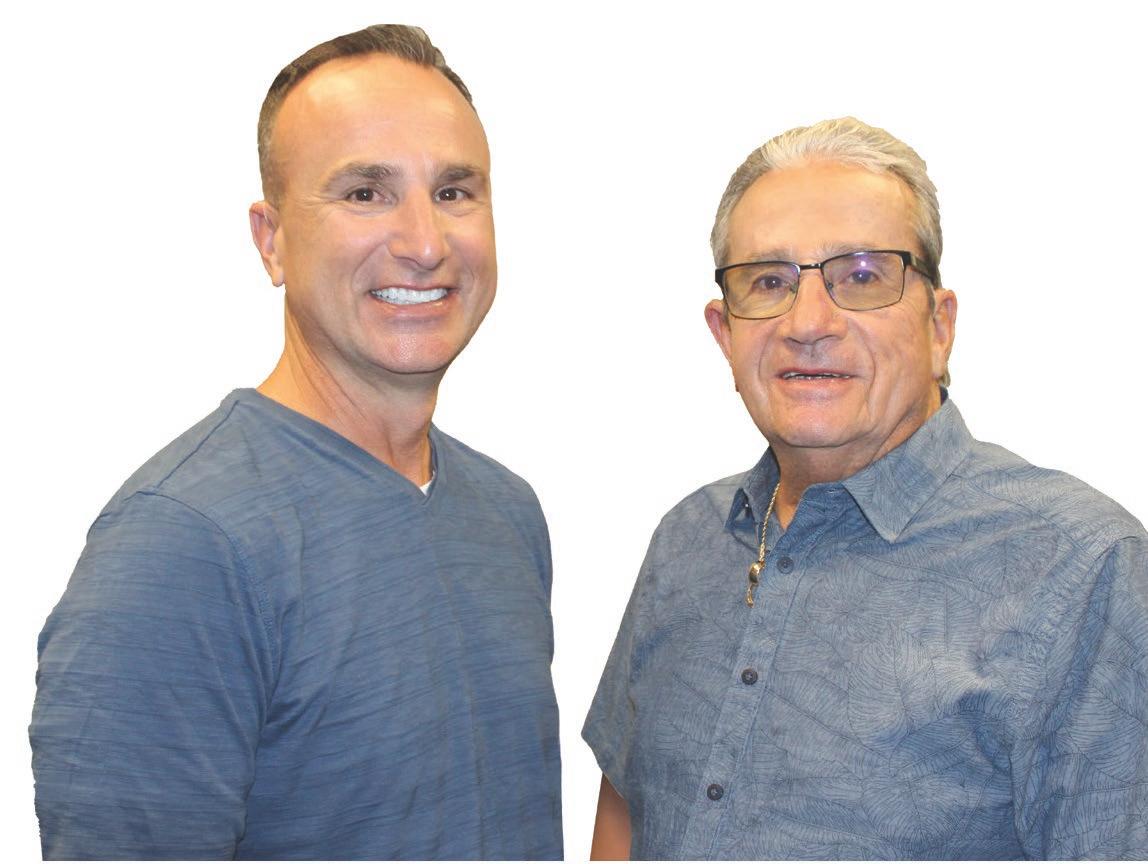








Shawn and John — Swift Audiology patients




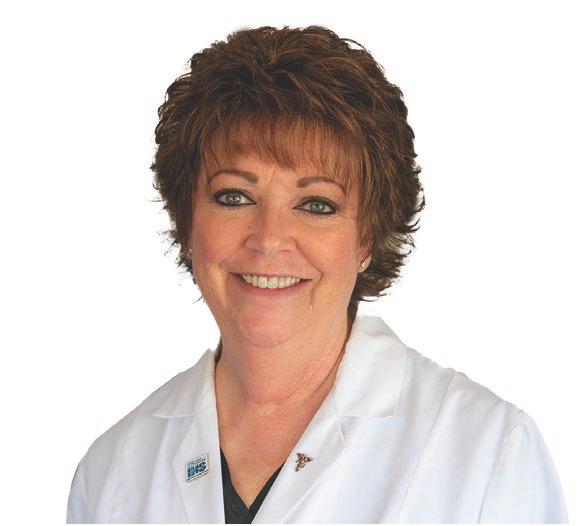




Mychael Morohovich plays at a ceremony honoring Vietnam War veterans at the National Cemetery of the Alleghenies
By Brad Hundt
CECIL – Veterans of the Vietnam War were honored in a ceremony at the National Cemetery of the Alleghenies in Cecil Township on March 28.
It happened on the eve of National Vietnam War Veterans Day, and close to 50 years after the conflict came to an end with the fall of Saigon. Many of the veterans from the region who attended the ceremony now have slow gaits or walk with canes.
“For many of you, the call to duty was not a choice, but an obligation, an obligation you accepted with unwavering resolve,” said state Sen. Devlin Robinson, the Bridgeville Republican who represents the 37th Senatorial District. “You are the embodiment of American resolve and you are everyday heroes.”
National Vietnam War Veterans Day is marked on March 29 every year. It was signed into law by President Trump as part of the Vietnam War Veterans Rec-
ognition Act of 2017. Edward A. Hajduk, director of the National Cemetery of the Alleghenies, noted that recognition for Vietnam War veterans was not always forthcoming in the aftermath of the conflict, which left more than 58,000 American military personnel dead and the country divided.
“Now we have the opportunity to do what should have been done 50 years ago, welcome our veterans home,” Hajduk said.
In 2020, the U.S. Department of Defense estimated that more than 6 million veterans from the period when the U.S. was engaged in Vietnam were still alive, but those numbers have been dwindling rapidly. Hajduk said there are 8,000 Vietnam War veterans buried at the National Cemetery of the Alleghenies, and, on average, 47 are interred there every month.
Courtesy of The Herald Standard









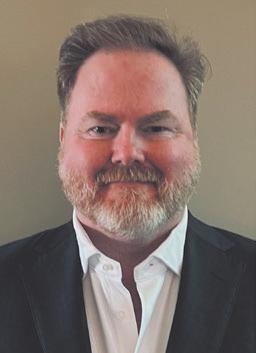






Travel is often cited as something to look forward to when retirement rolls around. With work no longer demanding retirees’ time, they have an opportunity to dust off their passports, take their suitcases out of the attic and book whirlwind trips.
It’s important for senior travelers to keep their personal safety in mind when away from home. That’s because seniors are considered a high risk group for travel-related dangers, including vulnerability to crimes like pickpocketing, says the National Institutes of Health. Seniors also may be more vulnerable to accidents or health-related incidents. Seniors can follow these guidelines for safe travel the next time they head off for parts unknown.
Some countries will not allow travelers to enter if their passports expire within six months of their arrival. Ensure that your travel documents will be valid at least six months after you will return home, says the U.S. Department of State. You don’t want to risk any hiccups that will put you in a precarious situation or prevent or delay your trip.
It’s important to have an idea of the atmosphere of any locale you plan to visit. The U.S. Department of State issues travel advisories that can inform travelers about potential destinations.
In addition to travel advisories, use resources like Trip Advisor to read reviews of hotels, tours and other travel components to find out if your safety may be in jeopardy.
It’s natural to want to share news of an upcoming trip with others, but reconsider posting about it on social media, both before leaving and while you’re away. There are cases of thieves using social media to target the homes of those who have advertised they’re going on long trips.
The Centers for Disease Control and Prevention says nearly nine in 10 older adults take at least one medication. Always store medication in a carry-on bag where you can access it easily and it can’t be lost. The Transportation Security Administration (TSA) will allow you to carry liquid medication, syringes, pumps, freezer packs, or IV bags on the plane. Just check the TSA’s rules so you know how to pack them properly.
Americans can apply for TSA Precheck or Global Entry programs to cut down on time spent in security lines. These travel certifications can help you avoid removing your shoes or separating a laptop or liquids from your carry-on. Each program has a non-refundable application fee, but if approved, precheck certification lasts for five years.
There is safety in numbers. Booking a tour or group travel package may cut down on the risk of being taken advantage of while away from home.
These are just a few safety precautions seniors can take to travel safely.





By Karen Mansfield
In 2016, Kathy Davis of Canonsburg underwent heart surgery, but complications left her with right heart failure, a condition where the right ventricle is too weak to pump enough blood to the lungs.
Over the years, her condition has worsened. In 2023, she was hospitalized for atrial fibrillation. Doctors prescribed Eliquis to prevent blood clotting, and a pharmacist told Davis the cost was $700 per month.
“I was absolutely panicked. I said, ‘Well, good luck to me because I’m not going to take it,” said Davis, who, in addition to Eliquis, takes 10 other medications, including Jardiance to prevent heart failure (list price, $700) and Tikosyn for her heart rate (list price, $600). “Most of my other medications are doable through my health insurance through work, but I just can’t afford the big three – the Eliquis, Jardiance and Tikosyn, and unfortunately, a lot of programs are income-based and I make too much to qualify but not enough to afford (the drugs). So, really, it’s been more than a year-and-a-half of me researching, with the help of one of my girlfriends and my children, to find out how I can find the best price for my meds.”
Davis’ experience is one that millions of Americans have shared.
A report from the Centers for Disease Control and Prevention showed that in 2021, 9.2 million adults between 18 and 64 who took at least one prescription medication

said they tried to save money by skipping doses, taking less than prescribed, or delaying a prescription refill. That number represents 8.2% of adults who did not take the prescriptions they needed. Similarly, according to a survey last year by the health policy nonprofit KFF, nearly 3 in 10 Americans struggle to afford the medications they need, and a recent RAND Corp. study found that U.S. drug prices were at least 2.56 times higher than those in 32 comparable countries.
In America, said pharmacist Peter Kreckel, director of clinical services at Nickman’s Drug in the Fayette County community of Lemont Furnace, a hodgepodge of practices by drug companies, insurance companies, and pharmacy benefit managers (PBMs) have created a system where U.S. prescription drug prices are significantly higher compared with prices in other high-income industrialized countries, and patients bear the brunt of high medication costs while small, independent pharmacies are losing money on transactions.
“Drug prices are ridiculous in this country because they are,” said Kreckel. “Reform is necessary. It seems things get more expensive the more layers of bureaucracy we lay on them.”
Kreckel’s son, Philip, a data analyst for a bank, who is diabetic, moved his family to Frankfurt, Germany, in part because of the lower cost of prescription medications.
Abox of semaglutide (Ozempic) from Nickman’s wholesaler, for example, costs $963, while the cost at Philip Nickman’s pharmacy in Frankfurt is $86. The price was the same in Austria and Slovakia.
Pharmacist Chris Antypas, who owns four pharmacies – including Asti’s pharmacies in Washington and South Hills – and is the outgoing president of the Pennsylvania Pharmacists Association, described the formula that the pharmaceutical industry uses to determine the cost of prescription drugs as “broken.”
“The health-care system is broken, and it’s not working for patients, and it’s definitely not working for those delivering care, including doctors and pharmacists. It seems to be working only for the organizations that don’t actually provide care,” said Antypas. “So you end up seeing these people sourcing their medications at four or five pharmacies in order to find the cheapest drugs.”
That’s exactly what Davis did.
She purchases her prescription meds from places including Amazon Pharmacy and Cost Plus Drugs (co-founded by businessman Mark Cuban to lower prices for generic drugs by removing the middlemen, including PBMs). Earlier this week, Davis qualified
for Allegheny Health Network’s Care Partners, and was informed her co-pay for her ” big three drugs” would be zero.
“It’s life-changing. I sat and sobbed when I found out,” said Davis.
Brooke Spino, a pharmacist at Highmark who works with AHN primary care providers, cautioned that opting not to take needed medications can result in worsening health conditions and said there are creative solutions – including AHN’s Care Partners – that can help people get the medicine they need.
One of the options, she said, is to talk with your doctor and pharmacist if you’re hit with an unaffordable price for medication.
“I would want a consumer to know to not suffer in silence, and for them not to think they’re stuck on an unaffordable medication regimen without any avenue for a solution. I want them to know that there is help out there available, to talk to their providers, to find solutions and ensure that they are on an appropriate regimen,” she said.
Other strategies: generic drugs, when available; programs like PACE, Medicare’s Extra Help, and discount coupons.
Antypas said much more must be done to rein in prices for Americans, and that consumers should demand reform.
“Patients need to push back and raise their voices to the legislators who need to step in. I can’t say enough about how critical it is that they make their pain known to their legislators who can change this,” said Antypas. It”s such a convoluted system. You have all these hands in the cookie jar, and the pharmacy is upside down. We’re actually dispensing the medication, everyone else is an administrative piece. This is a super complicated ar-
rangement for how money flows in health care.”
There have been efforts.
As part of the Inflation Reduction Act signed in 2022, drug companies have agreed to lower the price of 10 prescription medications for people with Medicare Part D. The negotiated prices will go into effect on Jan. 1, 2026. Additionally, out-of-pocket expenses for prescription drugs are now capped at $2,000 for people with a Medicare prescription drug plan. And enrollees have the option to spread out their out-of-pocket costs in monthly payments over the course of the year.
Last week, U.S. Sen. John Fetterman (D-Pennsylvania) was among a bipartisan group that introduced the Capping Prescription Costs Act, legislation that would cap the annual out-of-pocket cost of prescription drugs at $2,000 for individuals and $4,000 for families with private insurance.
And earlier this month, U.S. Sen. Chuck Grassley (R-Iowa) and U.S. Sen. Maria Cantwell (D-Washington) reintroduced two bipartisan bills to combat the high cost of prescription drugs and provide greater transparency of PBMs.
Last year, Gov. Josh Shapiro signed bipartisan House Bill 1993 into law, providing stronger protections for patients in Pennsylvania and increased regulatory oversight of PBMs, saying, “Pennsylvanians are getting screwed by the high cost of prescription drugs and too many rural pharmacies have been forced to close their doors, while the few PBMs that dominate the market are raking in billions.”
Since January 2024, over 150 pharmacies have closed in Pennsylvania, and the Pennsylvania Pharmacists Association estimates
that over 70 of those pharmacies are independently run.
For her part, Davis encouraged patients not to give up.
“It’s frustrating, it’s maddening, it’s sad, really. Oftentimes, the people who need help the most are seniors, and they may not be tech savvy, they may not have advocates or kids to help them, or they may not have medical advocacy to provide them with information,” Davis said. “I can see where people are faced with buying groceries or paying bills, or buying their medication. It’s an absolute game of chess, and you have to look all over the place to find the best prices. A lot of it is just not being afraid to ask for help. I was embarrassed when I said I couldn’t afford the Jardiance.
“I feel like I have learned so much that I could become an advocate for helping people find the cheapest drugs, and help people figure out ways they can afford their medications. My story had a happy ending, but not everyone does.”.

The human body is ever-changing. Though it’s not often so easy to detect the changes the body goes through, such alterations may become more noticeable with age.
One age-related change that’s easy to overlook is related to thirst. The Cleveland Clinic notes seniors typically do not feel as thirsty as they once did. That compels seniors to consume less fluids, which in turn makes them more vulnerable to dehydration.
Why is my risk for dehydration higher now than when I was younger?
Seniors may ask this question, and body composition changes that correspond to age are often to blame. According to the Cleveland Clinic, seniors’ bodies do not demand water in the same way they did when they were younger. So people tend to drink less water as they age. Some also suffer from decreased kidney function that also compromises fluid levels in the body. These things mean many seniors have less water in their bodies than they used to, which increases their risk for dehydration.
How serious is this threat?
The threat posed by dehydration is serious. In fact, the Cleveland Clinic notes that dehydration is a common cause of hospitalization among adults age 65 and older. The Agency for Healthcare Research and Quality also notes that adults 65 and over have the highest hospital admission rates for dehydration of any group.
How do I know if I’m dehydrated?
As noted, aging adults do not typically feel as thirsty as they did when they were younger. That’s important to remember, as the
Cleveland Clinic notes that thirst might actually be a sign of early dehydration. The following are some additional physical signs of dehydration:
• Fatigue and weakness
• Dizziness or a loss of coordination
• Dry mouth and/or a dry cough
• Headache
• Muscle cramps, which can be caused by a loss of electrolytes through sweating
• Chills or heat intolerance
• Flushed skin
These symptoms are notable in their own right, but some may make seniors vulnerable to additional issues. For instance, dizziness or a loss of coordination resulting from dehydration may make seniors more vulnerable to falls. Falls are a significant threat because they increase the likelihood of broken bones and other serious injuries, but a fall also can adversely affect mental health.
A fall that causes injury may lead seniors to withdraw from certain activities, including recreational sports or other physical activities often performed alongside fellow seniors. Withdrawing from such activities can lead to isolation and depression.
How can I avoid dehydration?
The goods news is that hydrating is pretty easy, particularly when seniors are aware of their vulnerability to dehydration. The Cleveland Clinic urges seniors to consume sufficient fluids each day, even spicing up water with a fruit slice if necessary. In addition, seniors are urged to avoid caffeine, which can force more trips to the bathroom to urinate and thus lose fluid. Cucumbers, celery and, of course, watermelon also can be incorporated into seniors’ diets each day, as these foods are high in water content. Dehydration poses a serious threat to seniors’ health. But that threat can be easily overcome when seniors make a concerted effort to stay hydrated each day.



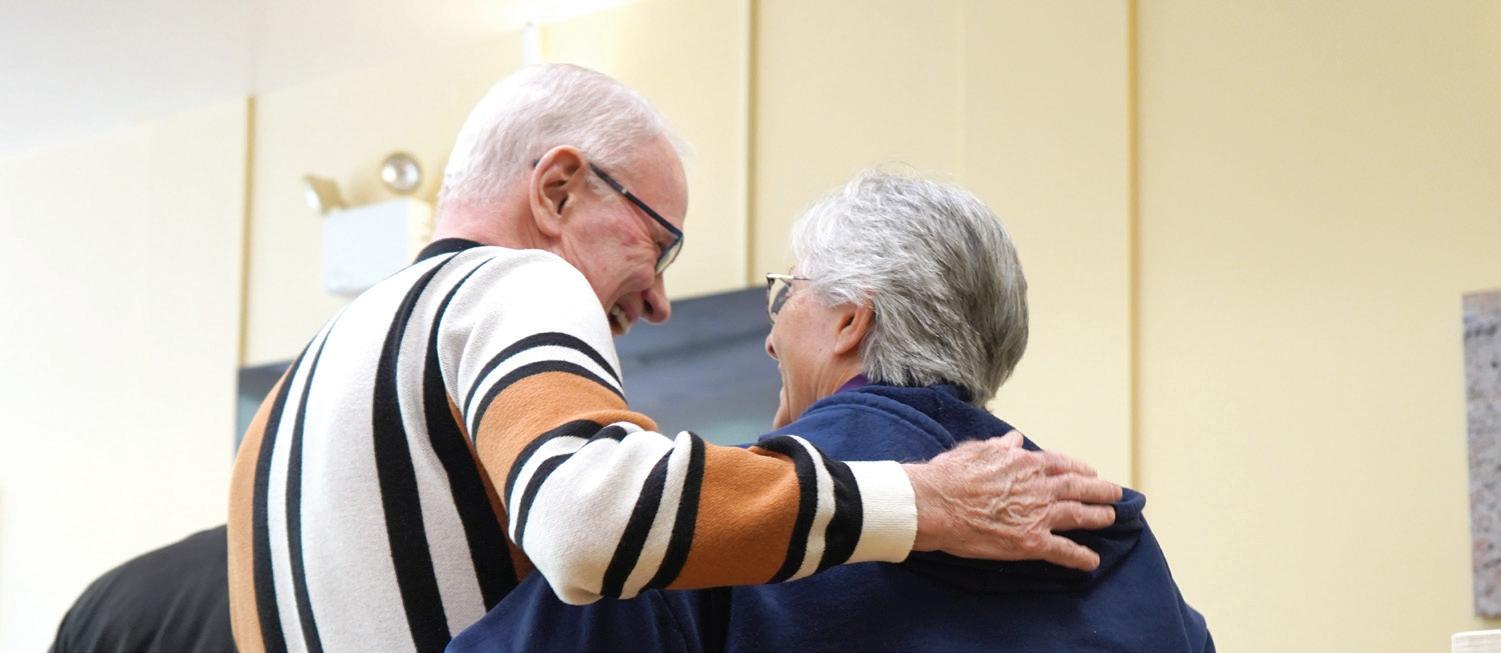

• Kosher-style congregate lunch each weekday
• Information and referral services
• Wellness programming
Monday-Friday • 9 am-5 pm JCC South Hills • 345 Kane Boulevard Pittsburgh • 15243
• Evidence-based programs such as HomeMeds, Chronic Disease Management and Aging Mastery
• Education opportunities in person and virtually through Virtual Senior Academy
• Clubs and social programs
• Volunteer opportunities
• Pickleball*
• Exercise
Scores of people view retirement as a time in their lives when they aren’t beholden to schedules and can finally indulge in hobbies and interests they’d been dreaming about while sitting in meetings or commuting to the office. Although retirement often is billed as a time to enjoy life, research suggests a different scenario plays out all too often. According to a recent study commissioned by The Oddfellows, one of the oldest friendly societies in the United Kingdom, 39 percent of retirees have experienced feelings such as loneliness, boredom and a reduced sense of identity and purpose shortly after the retirement glow wears off. Staying active and engaged during retirement may take some creative effort, especially for those who were used to the regimented schedule of work. But the following are some ways to maintain your active engagement with the world after calling it a career.
Take that trip. According to AARP, travel is one of the most popular things to do during retirement. Odds are there are places retirees have always wanted to visit, and the world is just waiting. Taking a tour or being part of a travel group can simplify travel planning by leaving the organizing to someone else. Travelers just enjoy the ride.
Get moving physically. The National Council on Aging says regularly engaging in physical activity a person enjoys can help prevent bone loss, boost immunity, improve mood, and even prevent chronic illnesses. Team sport participation is a top choice for seniors looking to stay active because sports pro-

vide physical exercise and also an opportunity to socialize with friends or teammates.
Maintain a consistent schedule. Some people thrive when they know what is coming next. If you need a routine in order to be happy, establish a consistent schedule that works. For example, people can wake up at the same time each morning and eat lunch during at the same time they did while working. Upon retiring, incorporate a daily plan for exercise if physical activity is not part of your traditional routine.
Try something new. It is never too late to try a new activity, class, sport, or hobby. Challenging yourself can stimulate the mind and provide a pathway to new relationships. Individuals can even consider going back to college. According to Kiplinger, New Jersey
residents age 65 and older can take regularly scheduled courses tuition-free at the state’s public colleges and universities, provided classroom space permits. There are similar programs in other states across the country.
Pick up a new language. Learning a new language is a beneficial tool for seniors who are looking to maintain cognitive abilities. The National Institutes of Health says bilingualism has been linked to higher cognitive reserve, delay in dementia onset and better performance in executive control. There are many ways for seniors to keep their brains and bodies active in an effort to overcome boredom and improve overall well-being.



















